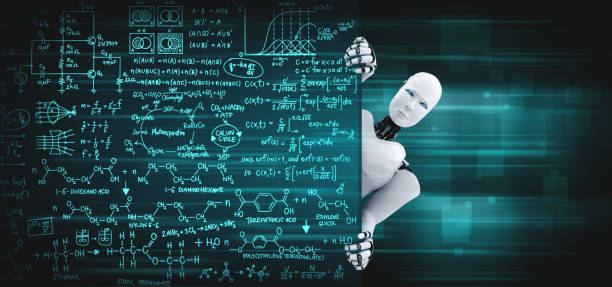Scientific experiments are at the heart of discovery and innovation. Whether you’re a student dipping your toes into the world of science or a seasoned researcher refining your techniques, understanding the essentials of scientific experiments is crucial. This blog post will guide you through foundational tips and best practices to ensure your experiments are not only successful but also meaningful and insightful. Join us as we explore the art and science behind effective experimentation.
The Foundation of Hypothesis
At the core of any scientific experiment is the hypothesis—a statement predicting the outcome of your investigation. Formulating a clear and testable hypothesis sets the stage for a structured and focused experiment. It acts as your guiding star, ensuring every step you take is aligned with your research objectives.
To craft a strong hypothesis, start by identifying the variables you want to explore. Ask yourself, “What do I want to discover?” and “What am I predicting?” Remember, a hypothesis doesn’t have to be complicated. It should be a simple, concise statement that is both testable and measurable.
The power of a hypothesis lies in its ability to provide direction. It narrows down the scope of your research, allowing you to zoom in on specific areas of interest. With a well-defined hypothesis, you can design your experiment to collect relevant data and draw meaningful conclusions.
Designing Your Experiment
Once you have a solid hypothesis in place, it’s time to design your experiment. This involves carefully planning each step to ensure reliability and accuracy. Start by defining your experimental variables—independent, dependent, and controlled. These variables play a pivotal role in shaping the outcome of your experiment.
The independent variable is the one you manipulate, while the dependent variable is the response you measure. Controlled variables remain constant throughout the experiment to minimize interference. By understanding and controlling these variables, you can confidently attribute any observed changes to your independent variable.
When designing your experiment, think about the resources you need. From equipment to materials, ensure you have everything in place before you begin. Consider wholesale glass bottles if your experiment involves liquid samples. Proper preparation not only saves time but also prevents unexpected disruptions during your experiment.
Implementing Data Collection
Data collection is the backbone of any scientific experiment. Without accurate and reliable data, drawing valid conclusions becomes challenging. To ensure data integrity, establish a systematic approach to data collection. Consistency and precision are key.
Begin by selecting appropriate measurement tools and techniques. Whether you’re using scales, thermometers, or spectrometers, ensure they are calibrated and suitable for your experiment. Record your data meticulously, noting any anomalies or unexpected occurrences. Detailed records provide a comprehensive view of your experiment and aid in analysis.
Remember, data collection doesn’t end once you’ve gathered your results. It’s important to organize and store your data securely. Create backups to prevent data loss and maintain confidentiality. Proper data management enables easy access and retrieval for future reference or collaborative research.
Analyzing Your Results
With data in hand, it’s time to analyze your results. This step involves interpreting your data to draw meaningful conclusions. Start by organizing your data into tables or graphs for visual representation. Visual aids enhance comprehension and make it easier to identify patterns or trends.
Statistical analysis is often employed to determine the significance of your results. Various statistical tests can assess relationships, differences, or correlations between variables. Choose the appropriate test based on your research objectives and data type. Statistical analysis adds credibility to your findings and helps you make informed decisions.
Don’t be disheartened if your results don’t align with your hypothesis. Scientific experiments are about exploration and learning. Unexpected outcomes might lead to new avenues of research or innovative discoveries. Approach discrepancies with curiosity and an open mind.
Drawing Meaningful Conclusions
The ultimate goal of any scientific experiment is to draw meaningful conclusions. Your conclusions should be based on the evidence gathered during your experiment. Align your findings with your hypothesis and interpret their significance in the broader context of your research.
Reflect on the implications of your results. How do they contribute to existing knowledge? Do they challenge established theories? Clear and concise conclusions provide valuable insights to the scientific community and pave the way for future research.
It’s important to acknowledge any limitations or potential sources of error in your experiment. Transparency enhances the credibility of your research and encourages further exploration by other scientists. Remember, science is a collaborative effort built on shared knowledge and continuous improvement.
Sharing Your Findings
Once you’ve drawn your conclusions, it’s time to share your findings with the world. Scientific communication is a vital aspect of the research process. It allows others to learn from your work, replicate your experiments, and build upon your discoveries.
Consider presenting your findings at conferences or publishing them in scientific journals. Engage with the scientific community through discussions and collaborations. Sharing your research not only contributes to the advancement of knowledge but also fosters connections and partnerships.
When communicating your results, tailor your message to your audience. Use clear and concise language, avoiding jargon that may confuse non-experts. Visual aids such as graphs or diagrams can enhance understanding and engagement. By effectively sharing your findings, you become part of a global network of researchers working towards a common goal.
Conclusion
In the world of discovery and innovation, scientific experiments stand as the foundation upon which advancements are built. Whether you’re a curious student or an experienced researcher, grasping the essentials of conducting scientific experiments is indispensable.
From formulating a hypothesis to sharing your findings, each stage holds its significance. This guide has aimed to equip you with vital insights and practical tips to empower your experimental endeavors. Remember, a well-structured hypothesis, thoughtful experimental design, meticulous data collection, thorough analysis, and meaningful conclusions together shape the success of your scientific pursuits.

